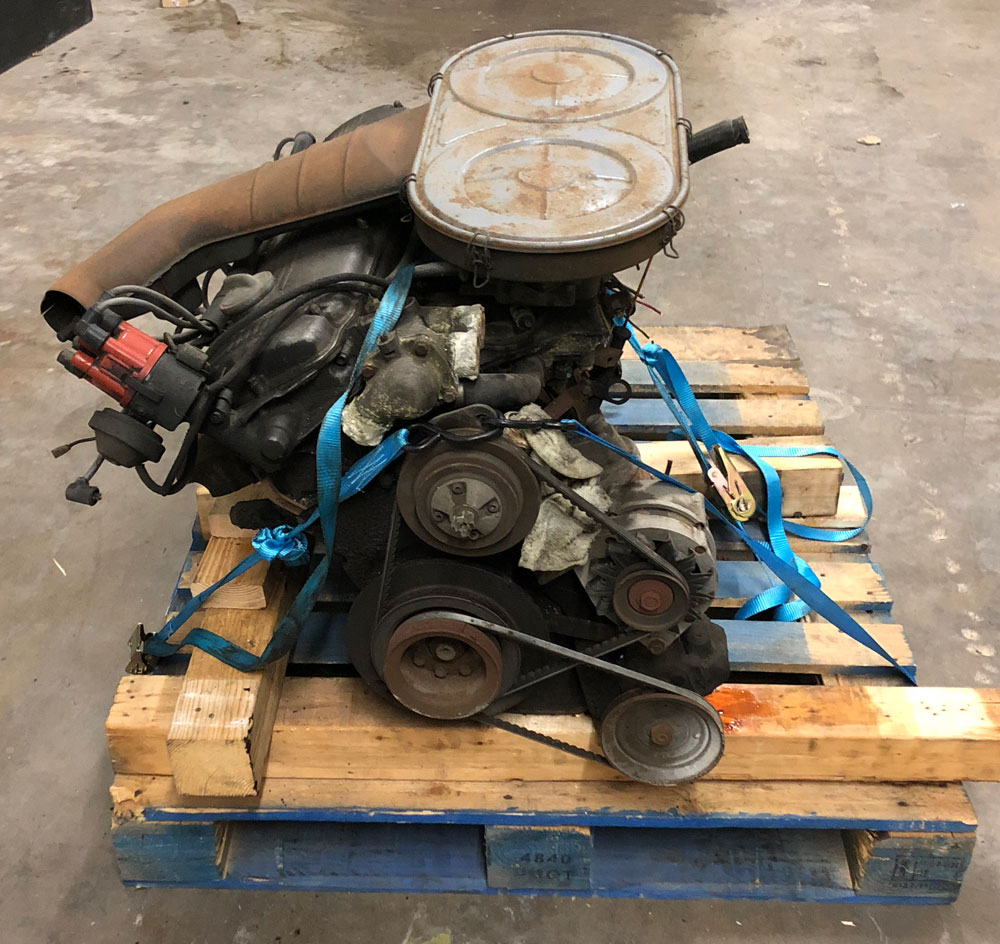Out with the Old
This week we saw our first real milestone: Removing the 3.0 straight-six motor and drive train. It was bittersweet to be sure. It is not lost on me that this (and every) BMW straight six is a beautiful piece of engineering. I have had a number of people remind me that I am ruining a classic combination of coach and motor by converting her to electric.
On that note, last weekend I rode along with a friend on a two-day rally through the Southern California mountains and deserts. In the group were some of my favorite gas-burning vintage cars: Porsche’s, BMWs, Austin Healeys, Triumphs and more. We drove my buddy’s terrific vintage Alfa Sport Sedan. These great cars offer their drivers the enjoyable chore of working the clutches, gears and non-electric steering through the curves and the grades. The feeling returned from this enthusiastic driving is pure joy.
I wanted so badly to take the coupe on this drive before it’s disassembly and restoration, but neither exhaust nor clutch it was pretty much out. All weekend long I kept thinking about what I was giving up by removing the soul of the vintage machinery for the advantages of the electric. But the CSE is to be my daily car. A weekend of smelling like exhaust, fuel and coolant is awesome with a bunch of car guys, but not ideal for a board meeting or date night. I am trying to build something that can give me a slice of the vintage soul in a “scent free” edition, so that I can enjoy it every day.
Out with the Old
Before we strip the car all the way down for it’s proper restoration, we wanted to find out just how much the drive train weighs. The engine, transmission, drive shaft, differential and cooling system weigh far more than our little electric drive unit. But the tank of gas weighs a fraction of our new fuel: Batteries. In order to achieve our goal of 250 miles of range we need quite a few of those heavy beasts. A few posts back we weighed in the coupe in at 3170 lbs. We are hoping that the drive train is a large amount of that weight.
Things got off swimmingly. We started at the rear with fuel tank and the differential. We thought the diff would be maybe 40 pounds or so. We were happy to discover it a beastly 85 lbs! We were off to a good start. We left the half-shafts going to the rear wheels in place as those (or replacements) will connect to the Tesla drive unit. We then removed the drive shaft and the shifter. Finally we unbolted the transmission and motor mounts and lowered the car. We then removed the radiator and anything else involved in making the car go. Everything else stays in for the moment. We drained and properly collected gallons of various liquids, but somehow still had to mop up gallons more. A pesky tie rod that was interfering was just not interested in coming loose. Perhaps we could have pressed her apart, but it was more fun to whip out the grinder. At least we used safety glasses.
After a few careful hours and one forklift, the motor and tranny were safely out of the car and on a pallet for it’s future owner.
What’s the Verdict?
With no drive train our coupe weighs in at:
Front: 1020 lbs. (Drivers 576 lbs, Passenger 444 lbs.)
Rear: 1140 lbs. (Drivers 588 lbs, Passenger 552 lbs.)
Total: 2160 lbs.
Drive train approximate weight: 1010 lbs.
In rough numbers, our Tesla drive unit weighs 295 lbs, and the battery modules weigh 55 lbs each for a minimum of 770 lbs. This brings us to 1065 lbs. Add to that the weight of our fabricated mounts, battery enclosures, battery management and such, and we hope to be only modestly over the original weight of the coupe. If needed, we still have the option of lighting up other portions of the car such as seats, carbon-fiber hood and more. We are exploring some suspension options that could be lighter and more friendly as well.
Meanwhile, we have a bunch of stuff for sale! A nice running 3.0 sixer, tranny, driveshaft, differential and so forth. Reach out for details if you are in need.
Until next time,
Paul






